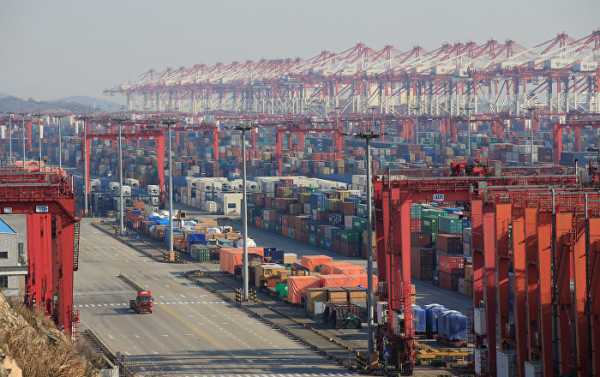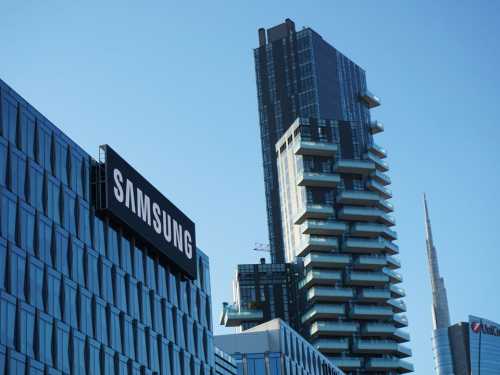
No ceasefire in the China-US trade war should be expected either during or after the G20 summit ‒ but that’s okay, because China can weather the storm. That’s the thesis of a new piece by Pei Changhong, the former director of one of China’s top economic think tanks, who says Beijing should settle in for the long haul.
“We shouldn’t and can’t accept the US imposed terms for a ‘ceasefire,'” wrote Pei Changhong, former director of the Institute of Economics at the Chinese Academy of Social Sciences, in a Thursday online article, the South China Morning Post reported. “The trade war won’t end in two or three years and we should make long-term mental preparations.”
While earlier this month, US President Donald Trump indicated that a deal on trade might be reached at the G20 summit in Buenos Aires that began on Friday, Trump dashed those hopes by telling reporters “I don’t know if I want to do it” and “I like the deal we have now” just before getting on the plane to the Argentinian capital.
Trump has indicated he’s got another $267 billion worth of tariffs against Chinese exports to the US ready to go.
The US has already levied tariffs on $250 billion worth of Chinese goods since July, and China has responded in kind with $110 billion in tariffs on US products.
The BBC notes that China has limited ability to respond in kind, since it’s already got trade penalties against $113 billion of the $130 billion in goods it imports from the US. That makes it more likely the socialist country will react by easing fiscal and monetary policy, letting the value of the yuan fall — an old tool Beijing has used before, leading to accusations of currency manipulation by Trump — and seeking trade opportunities elsewhere.
“China’s strategy towards Trump will favor resilience over retaliation,” Michael Hirson, Asia director at Eurasia Group, told the news service on Friday.
That’s effectively what Pei recommends as well. “China has its own timetable and road map,” he said, noting that his country needs to avoid the strategic misstep of measuring its successes against those of the United States.
“While tariffs draw most of the attention, non-tariff measures are just as important in this trade war and will probably be in play for much longer,” Hirson said. “On the US side, this includes measures such as recently passed legislation that tightens investment restrictions and export controls…. In China, it involves using regulatory tools such as anti-trust investigations to squeeze US tech firms and tip the advantage to domestic competitors.”
Ruchir Sharma, chief global strategist and head of emerging markets at Morgan Stanley, told CNBC’s “Closing Bell” Thursday that the trade war wasn’t started by a single event and it won’t be concluded by a single event. “It’s death by a thousand cuts,” he said, noting it would take years to fully play out.
While the folks over at Market Watch consider that Xi is in a position that requires negotiation, it’s notable that their rationale for this position comes from the point of it being a protracted struggle and that Xi “simply cannot afford to lose this opening skirmish of Cold War 2.0,” as Anatole Kaletsky wrote in a Friday article. It’s precisely because the US mission of “a generational struggle against the containment of China” is becoming apparent that Xi must negotiate.
Indeed, Kaletsky believes that Trump’s policies are going to hurt the US more than they will China, which can react in the way mentioned above, but also that China has already made clear that it’s willing to meet up to 80 percent of the trade demands issued by the US as justification for the tariffs.
Trump’s second in command, Vice President Mike Pence, recently tried to run interference at a pair of summits last week in Singapore and Port Moresby, Papua New Guinea, where the ASEAN and APEC organizations tried to hash out their continued policy of neutrality. Pence’s goal, as part of the US Indo-Pacific strategy, is to force Asian nations to take sides in the dispute, which Asia Times correspondent Nile Bowie told Sputnik on November 17, the last day of the ASEAN summit, is causing them to increasingly side with China.
“They see Trump as embracing a kind of unpredictable brand of protectionism and being cool to the kind of multilateral approach to trade that previous administrations have upheld,” Bowie said, noting that it puts socialist China in the ironic position of being the champion of free trade in the region against the capitalist United States.
The problem with Kaletsky’s position, though, is that the remaining 20 percent of US demands are precisely those with which lies the rub: those involving technology and industrial subsidies are non-negotiable from the Chinese point of view.
They’re also the most important for US strategy, Sputnik reported in August, because their primary goal is to blunt the technological advantage toward which China is presently poised to leap.
“No matter what China does, in the eyes of the United States, China’s development has already ‘damaged the supremacy of the US,'” said an August 10 editorial in the People’s Daily, the official newspaper of the ruling Communist Party of China. It noted that the US considers China “an unprecedented opponent.”
“To tackle such an ‘opponent,’ the US must adopt two methods,” the article said. “[F]irst is to use the opponent for motivation and to drum up mass political support for ‘making America great again,’ and the second is to contain the opponent’s supremacy at every level.”
Jim Phillips, CEO and chairman of the nanotechnology firm NanoMech, told Breitbart on July 29. “We are totally at war with China right now… It’s not a war of bombs. It’s a war of cyberwarfare, and it’s also a war of GDP and jobs. And the one that has the most GDP and the jobs is going to be the clear winner.”
“America will no longer have a disproportionate financial advantage that gives it the moral, economic and the leadership authority it has now,” Phillips said about the US falling behind in advanced industries like nanotech. “When this happens, America loses; the world changes. Everything changes… [China] won’t have to use its military.”
On the other side of the coin, Philippe Legrain at Foreign Policy noted earlier this year, before the trade war began in earnest, that China was already poised to weather any economic storm the US could possibly throw at it.
“Even a blanket US tariff on all Chinese goods exports — iPhones and all — would be bearable for China,” he wrote in April 13, noting that the impact of even a 25 percent tariff on all US goods imported from China would only hurt the Chinese GDP by 0.7 percent per year.
“That would hurt. But it would still leave the Chinese economy growing at 6.1 percent a year,” he noted.
Philippe, too, noted Beijing’s unique advantages as including its ability to manipulate fiscal policy in a way the US cannot, including offsetting a decline in foreign buyers by encouraging a growth in the domestic consumer economy. In turn, the Chinese government has the money to “take the hit,” as it were, while the US does not, since Beijing isn’t operating on a budget deficit, whereas the US’ comprises some 4 percent of its GDP at present and shows no signs of decreasing.
In all, Pei argued, the Chinese government needs to realize the era that began with China joining the World Trade Organization in 2001, a post-Cold War period in which the US welcomed China into the worldwide capitalist sphere, is over.
“The previous strategic development period was largely based on the misjudgment of the United States and other Western countries,” Pei said, citing the era of market liberalizations and privatization that began in China under Deng Xiaoping in 1978. “Now that they have woken up, there will be no more incentives [to adopt Western ways] offered in the future.”
Sourse: sputniknews.com






